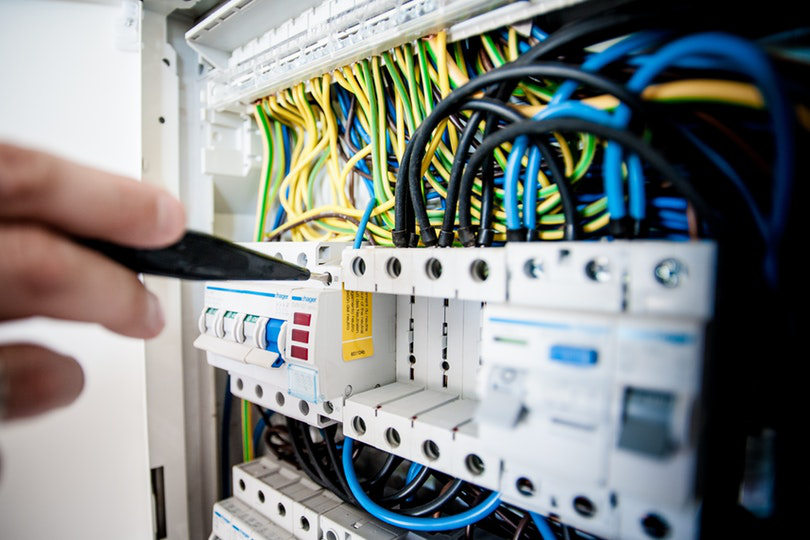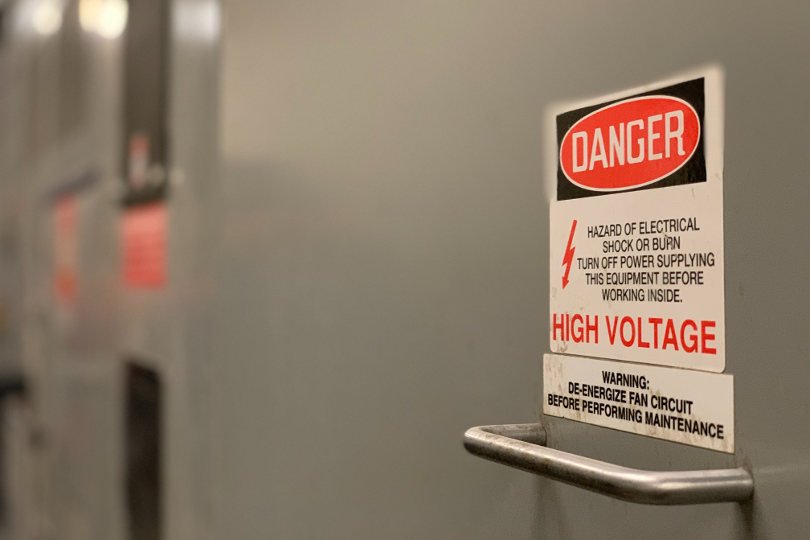Working with electricity has its own set of dangers—that’s why understanding the basics of electrical safety in the workplace is paramount. Learn more here.
Electrocution is the 6th leading cause of death in the workplace. Thankfully, the number of people killed by exposure to electricity is following a downward trend. This is largely thanks to workplaces putting an emphasis on electrical safety and properly training their employees.

Wondering what the basics are? Read on to learn about electrical safety and how everyone can work together to ensure that everyone goes home safely at the end of the day.
1. Know Hazards
The first step to avoiding electrical calamities is knowing what poses a hazard. All employees should receive training on what to watch out for. A few common hazards include:
- Frayed wiring
- Electrical outlets too close to water or another conductor
- Overloading circuits
- Not using electrical lockout devices
- Careless employees
Make sure that everyone in your shop knows the hazards to watch out for and that they should speak up if they see something. You can even designate a certain person to carefully comb your workplace at certain intervals specifically looking for electrical hazards.
2. Use Proper PPE Gear
Another key method of reducing the risk of electrical injuries is by using the appropriate Personal Protective Equipment (PPE). When working with electricity, hard hats, safety glasses, leather gloves, and footwear are all excellent pieces of gear. For those who may be exposed to arc flashes, arc-rated flash clothing is also a must.
3. Have Proper Training
Anyone dealing with electricity should have proper training. This means that when an electrical problem arises, an employee with the proper knowledge should be called to deal with it. You might think electricity isn’t that confusing and you can figure it out. But if you’re not even 100% sure of how to read a ladder logic diagram, you certainly shouldn’t be messing with an electrical problem.

4. Visual Reminders
Safety signs aren’t there for decoration. Reflective or bright-colored signs are a great way of grabbing an employee’s attention and pointing out a nearby potential danger. Signs can also include helpful information like what kind of PPE to use in a given area and voltage information.
5. Electrical Audits
At regular intervals, you should perform an electrical audit of your shop. This goes beyond walking around and looking for hazards as we mentioned earlier. A full audit should include thoroughly inspecting all electrical systems and ensuring they are working properly. You can do this audit internally, but often it is best to hire an expert inspector. They’ll have additional training on what to look for. Plus, they won’t be familiar with your equipment, so they won’t accidentally overlook something they’ve become accustomed to seeing. Most businesses should perform this audit about once a year.
Electricity is a great invention, but it should be treated with respect. Too many people miss work or lose their lives because of electricity-related accidents in the workplace. This is what makes electrical safety so important. What to learn more helpful tips for your business? Keep reading our blog for more great content!







